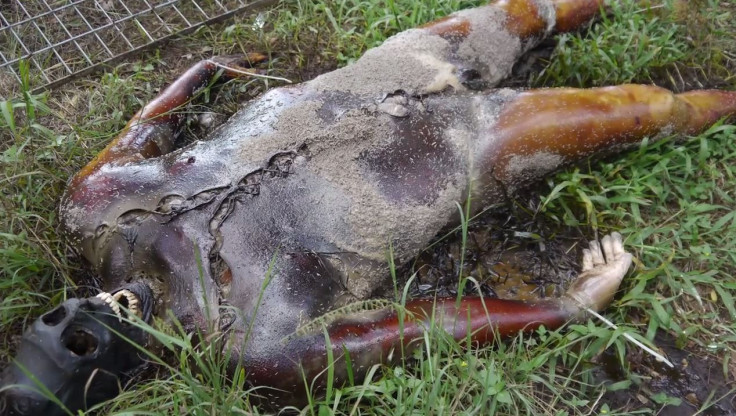Human Decomposition, Explored: Texas State University's 'Body Farm' Collects Skeletons For Research

We can thank the majority of human history for giving science the ability to examine the human skeleton, and its decomposition process. But recently — meaning within the last century — funeral and burial practices have changed drastically, altering the way we see the dead. It turns out that these practices, which include embalming and cremation, have made the decomposition process more mysterious. That poses a problem for forensic law enforcement teams, whose technology has become more advanced but are still unable to determine how long an especially decomposed body has been around for.
That’s where Texas State University’s “body farm,” near San Marco, Texas, comes in. Run by the university’s forensic anthropology research team, it’s one of only five in the world (all in the U.S.), and is the final resting place for about 50 bodies at any given time, Vox reported. Researchers at the farm are tasked with analyzing the decomposition process from beginning to end. Some bodies are placed under cages to prevent vultures from scavenging, but others are left out in the open for them to go to town. Others, meanwhile, are put in the shade while some are left out in the sun.
By putting the bodies under various conditions, the scientists are getting a fuller picture of how decomposition occurs. Over the course of six months to a year, depending on their location on the farm, their cells dissolve; bacteria, insects, and other small animals feast and reproduce; they bloat, release lots of fluid, and eventually dry out.
It turns out that there’s a lot more going on than many of us expect. Bacteria not normally found in the human body find their way to it through other animals, while some even attract certain insects that will kill competing bacteria. The decomposing body supports a rather diverse ecosystem, which scientists are now calling the necrobiome. Watch the video below to see how all of this works.



























